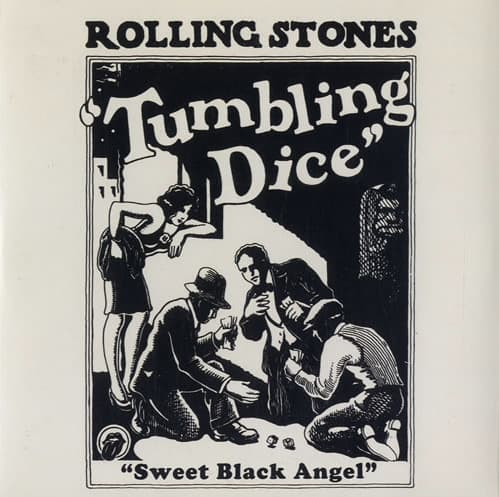
Rolling Stones’ “Tumbling Dice”: A Timeless Classic of Rhythm and Rebellion
Released on April 14, 1972, as the lead single from the Rolling Stones‘ double album Exile on Main St., “Tumbling Dice” quickly became one of the band’s most celebrated tracks. The song embodies the gritty, rebellious spirit that has long defined the Rolling Stones, making it a cornerstone of their illustrious career.
Co-written by Mick Jagger and Keith Richards, “Tumbling Dice” is a masterful blend of blues and boogie-woogie, driven by an infectious groove that’s as complex as it is captivating. The rhythm of the song, which some have described as “slippery,” plays with the listener’s expectations, constantly shifting and swaying like a gambler’s unpredictable fortunes. This intricate tempo has been a subject of admiration and analysis among musicians and scholars alike, who appreciate the subtle genius behind its construction.
Lyrically, “Tumbling Dice” tells the tale of a gambler who, despite his best efforts, cannot stay true to any woman. The narrative is classic Jagger, full of swagger and self-awareness, capturing the essence of the roguish anti-hero that the Stones often celebrate in their music. The song’s protagonist rolls through life, much like the dice he tumbles, never settling, always on the move—an apt metaphor for the band’s own career, marked by constant evolution and unrelenting momentum.
Upon its release, “Tumbling Dice” made a significant impact on the charts, reflecting its widespread appeal. In the UK, the single spent eight weeks on the Singles Chart, peaking at an impressive number five. Across the Atlantic, it reached number seven on the Billboard Hot 100, further cementing the Stones’ status as rock and roll royalty. The song also broke into the top ten in several European countries, including the Netherlands, Norway, and Spain.
Critics and fans alike have hailed “Tumbling Dice” as one of the Rolling Stones’ finest achievements. Its musicianship, marked by Jimmy Miller’s sharp production, has been praised for its depth and originality. The song’s lasting appeal is evident in its frequent inclusion on “best of” lists, such as those by Vulture and Rolling Stone magazines, where it stands alongside the greatest hits of the band’s extensive catalog.
The legacy of “Tumbling Dice” extends beyond the Rolling Stones’ own performances. The song has been covered by several artists, most notably Linda Ronstadt, whose 1977 rendition gave the track a fresh perspective by flipping the gender roles in its lyrics. Her version, featured on her album Simple Dreams, was a hit in its own right, reaching the Top 40 and securing a place on the soundtrack of the 1978 film FM.
Over the decades, “Tumbling Dice” has remained a staple of the Rolling Stones’ live shows, a testament to its enduring power and appeal. It’s a song that, much like the band itself, refuses to fade away—always rolling, always rocking, always ready to take another chance.